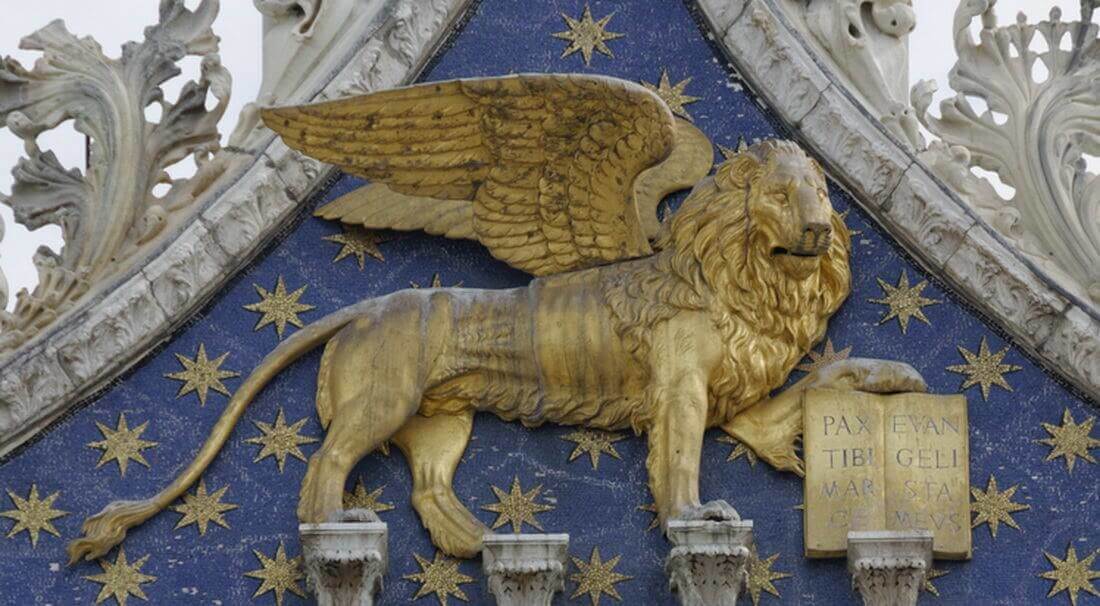
The Lion of Saint Mark in Venice: symbol of magnificence and power
The winged lion is an icon that spans the centuries
The Lion of Saint Mark is a winged lion that symbolically represents Saint Mark the Evangelist, patron of Venice. It is a symbol used to give an immediate and unique sign of identity and power. It doesn’t have an official or political meaning, but only a popular and religious origin.
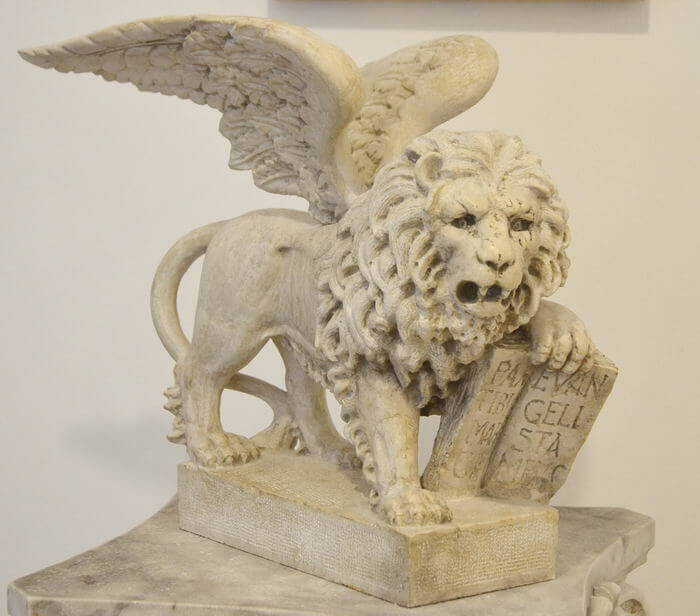
Arte 2000 work
It is the emblem of the lagoon city, of the ancient Serenissima Republic, of the municipality, of the province and of the Veneto region. It appears in the coat of arms of the Italian Navy therefore in the flag of the Merchant Navy. It is present in the squares and historical buildings of all the cities that have been dominated by the Serenissima Republic, on the Venetian badges of civil, military and religious use, in the flags and in the coins.
The Christian symbolism comes from an ancient legend
Marco was an evangelist, but not much information is known about him, the most relevant being taken from the Acts of the Apostles. He came from a family of priests in Jerusalem and his mission was that to convert the infidels and to create one of the most ancient and important centers of the Christianity of those times. Even if there are no reliable sources, it seems he died in Alexandria of Egypt.
The image of San Marco as a winged lion comes from an ancient legend which says that on a stormy evening, as he was returning to Rome from Aquileia, where he had gone to preach the Gospel, he found shelter in one of the few fishermen huts which were rising in Venice, probably in Rialto. After a frugal dinner he fell asleep. An angel, represented by a winged lion, appeared to him in a dream exclaiming a Latin sentence:
«Pax tibi Marce Evangelista meus, hic requiescet corpus tuum»
(Peace to you Mark my Evangelist, here will rest your body)
almost to mean that the saint would find rest, veneration and honor among the Venetian population. The first part of this phrase has become the most famous and used quote in reproductions of the lion of Saint Mark with the open book. Here is the article.
In the morning he told the dream to the fishermen. Than he sailed to continue the trip. The legend was handed down for centuries from father to son.
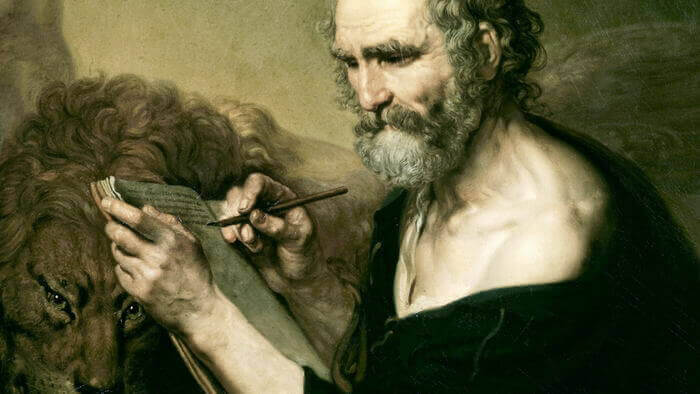
Vladimir Lukič Borovikovskij work
The lion preannounced that Mark would have found rest and veneration in Venice
Through the years, the Venetians felt in duty to return Saint Mark to Venice. The honour of guarding the important relic of one of the 4 Evangelists would have brought great prestige to the city and the possibility of claiming the ecclesiastical succession. In 828 the relics stolen in Alexandria of Egypt from two Venetian merchants, Bono da Malamocco and Rustico da Torcello, were welcomed in Venice from the Doges who, thanks to the angel’s prophecy, justified the feat.
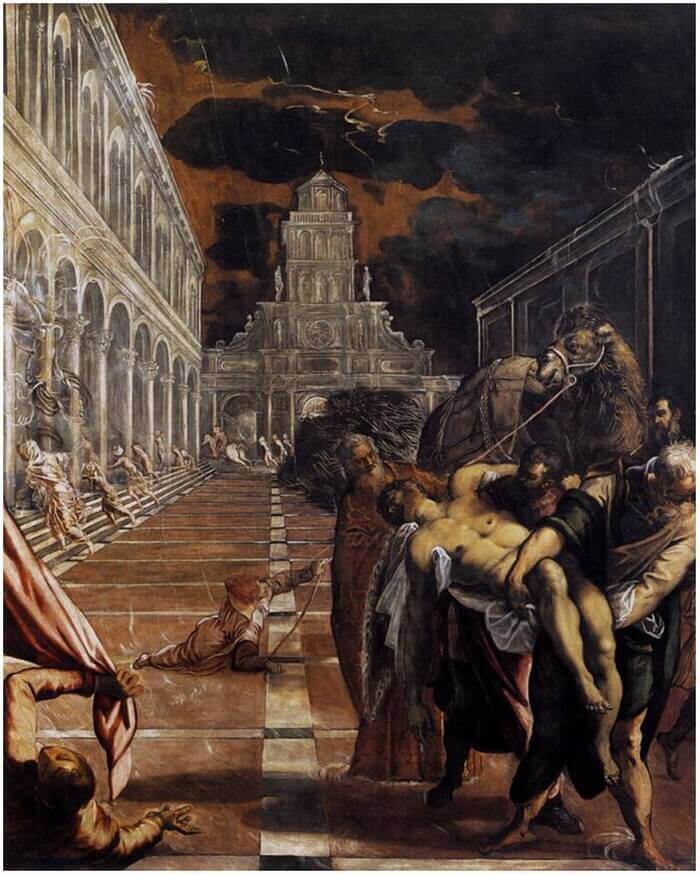
Saint Mark body snatching – Tintoretto – Galleries of the academy, Venice
In order to welcome the relics, the first basilica dedicated to Saint Mark was consecrated, then negotiations began with the Pope to obtain the recognition of the bishopric, first in Aquileia, then in Grado. In 1060, Doge Contarini decided to build what is now the great and imposing Saint Mark’s Basilica. The basilica was built in honour of the Saint, who had already become the protector and emblem of the city.
The representation of Saint Mark as winged lion became symbol of the lagoon city
The winged lion and the politics
The possession of Saint Mark relics had a strong impact on the citizenship that feeling sure and protected developed a strong devotion. It also brought important diplomatic and political benefits that have been useful to Venice and to its image on the international scene. In late 13th century, the lion acquired a political value: it appeared in the official documents of the Republic and was used as seal on the boundary stones.
In the Christian symbolism and in the art history the lion represents Saint Mark
The winged lion already appears in the Tetramorph
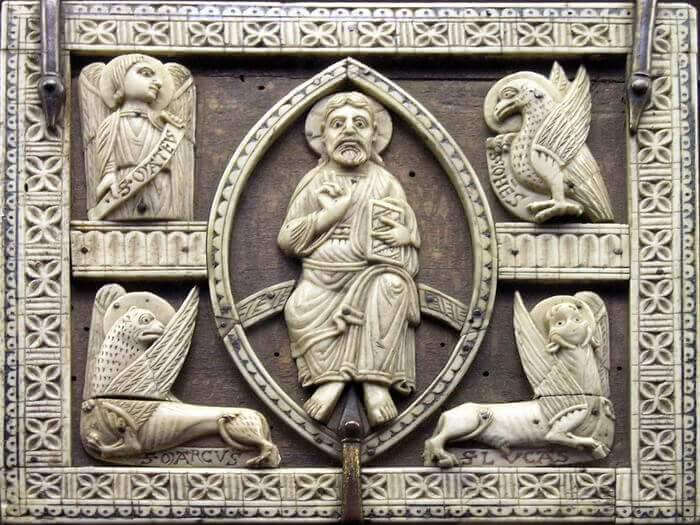
In the Tetramorph, ancient iconographic representation that means four figures, Christ is surrounded by four living beings, with the features of lion, of calf then became bull, of man and of eagle, winged and with halo. In 180 after Christ, Saint Ireneo, bishop of Lyon, interpreted these four symbols as the four Evangelists and at the end of the 4th century, Saint Girolamo definitely assigned an animal to each.
The lion, that is well-known as symbol of power, pride, magnificence, nobility and courage was associated to Mark because it emphasizes the Resurrection power, the majesty and the regality of Christ and the characteristics of his Gospel. Mark in fact, in order to describe Giovanni Battista who announces to the men the arrival of Jesus, began his book with the citation “the voice of one that shouts in the desert” that makes people imagine to the roar of a lion.
The Aurea legend of Jacopo da Varazze
Jacopo da Varazze, Dominican friar, wrote the “Aurea legend”, a Medieval collection of biographies of the saints that gave great emphasis to Saint Mark life. He induced the Republic to adopt a symbol to remember him and to inspire patriotic, pacific and religious emotions.
Many researchers date back to late 12th century the figure of the winged lion as official symbol of the Republic of Venice together with the welcome motto “Pax tibi Marce Evangelista meus”.
As symbol of the Serenissima Republic, this animal still today fascinates the Venetians but not only. It is considered symbol of power and regality.
Many are the commemorative and ornamental sculptures of the winged lions that are confused with the general lions. They are situated in front of the main entrance of the villas, on the pillars of the gates, in the gardens or inside the residences.
There are a lot of anecdotes regarding sculptors and works, we continue to tell them in order to introduce you the fascinating marble world. One of the most curious is that of the butter lion realized by Antonio Canova.
This article contains general information. For questions and curiosities leave a comment below. If you wish to be contacted, please fill out the form.
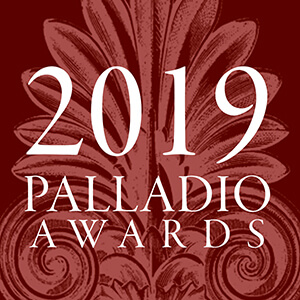
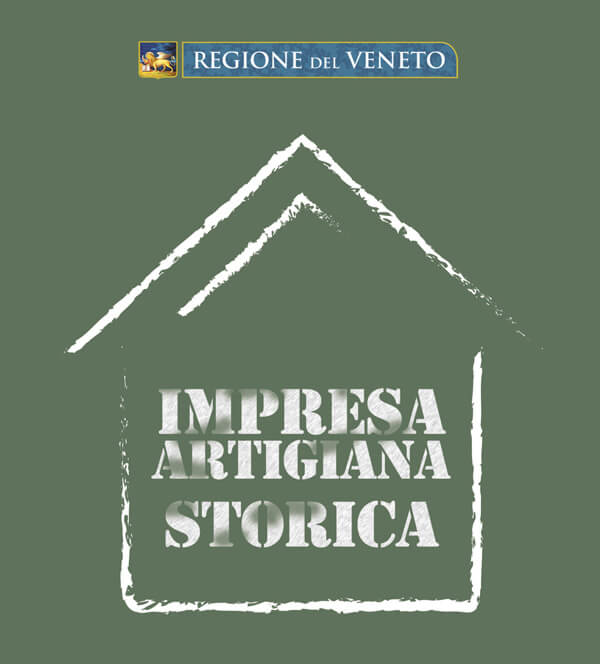
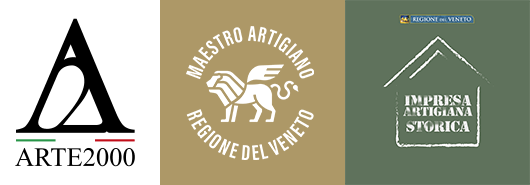
zidane
16 November 2022 at 5:02very clear and good article easy to understand. Thank you
Arte 2000 - Paola
16 November 2022 at 9:45Dear Zidane, your nice words help us to continue! Many thanks.
Anthony Fitz
30 April 2023 at 20:46Great write up
Arte 2000 - Paola
3 May 2023 at 10:09Thank you very much Anthony
ilan
4 May 2023 at 20:39This blog is an invaluable resource for anyone looking to stay informed and educated on the topic.
Arte 2000 - Paola
5 May 2023 at 12:33Dear Ilan, I thank you very much for the nice words, they are very important for me
beylikdüzü masaj salonu
6 May 2023 at 19:46This blog is an invaluable resource for anyone looking to stay informed and educated on the topic.
reklam ajansı
31 May 2023 at 3:31Your blog has a user-friendly layout that makes navigation a breeze.
Arte 2000 - Paola
31 May 2023 at 8:35Dear Roby,
I thank you for your opinion. It’s very important for us that the layout is easy, the blog is open to all lovers of the world of marble.
kurye
6 August 2023 at 14:13Thank you for being a voice of reason and positivity in a noisy world.
Arte 2000 - Paola
8 August 2023 at 12:41Dear Kurye,
I thank you for your kind words. It is important to be positive and optimistic and to make a contribution, however small, to beautify this world
Teknik Telekomunikasi
17 January 2024 at 5:08Can you elaborate on the cultural or religious context that led to the adoption of the Lion of Saint Mark as a symbol in Venice? regard Telkom University
Arte 2000 - Paola
29 January 2024 at 10:14Dear reader,
I thank you for reading this article and I invite you to read the others to; we have also written other articles on the Lion of San Marco here on our blog. We are an artisan laboratory of artistic marble works and we write the articles to offer some general information on artistic topics about our work. The topic is very vast and complex, there are many different versions and opinions. For further specific deepening I suggest you purchase some books.